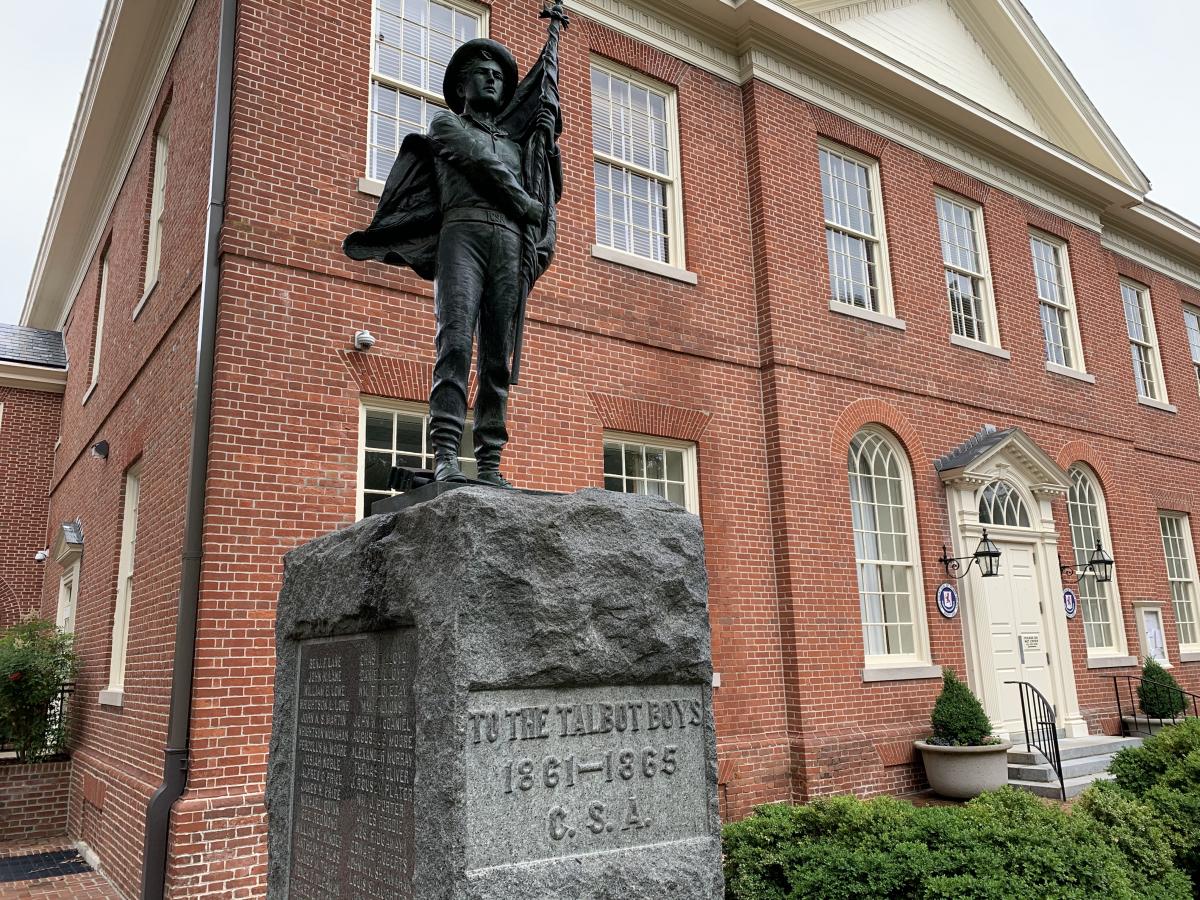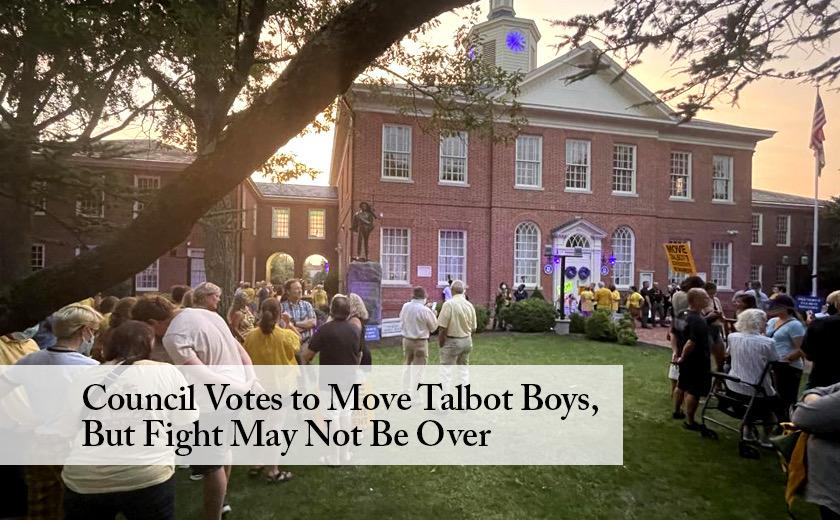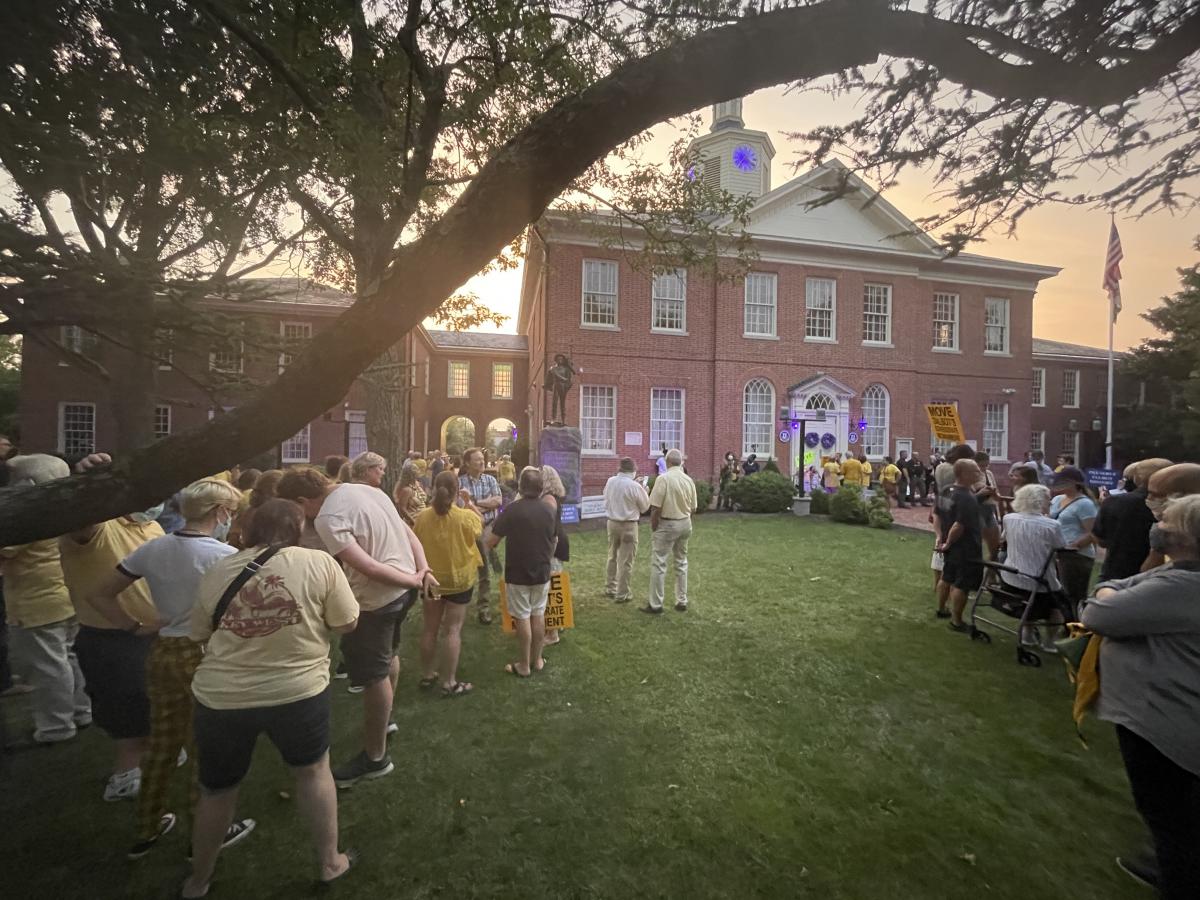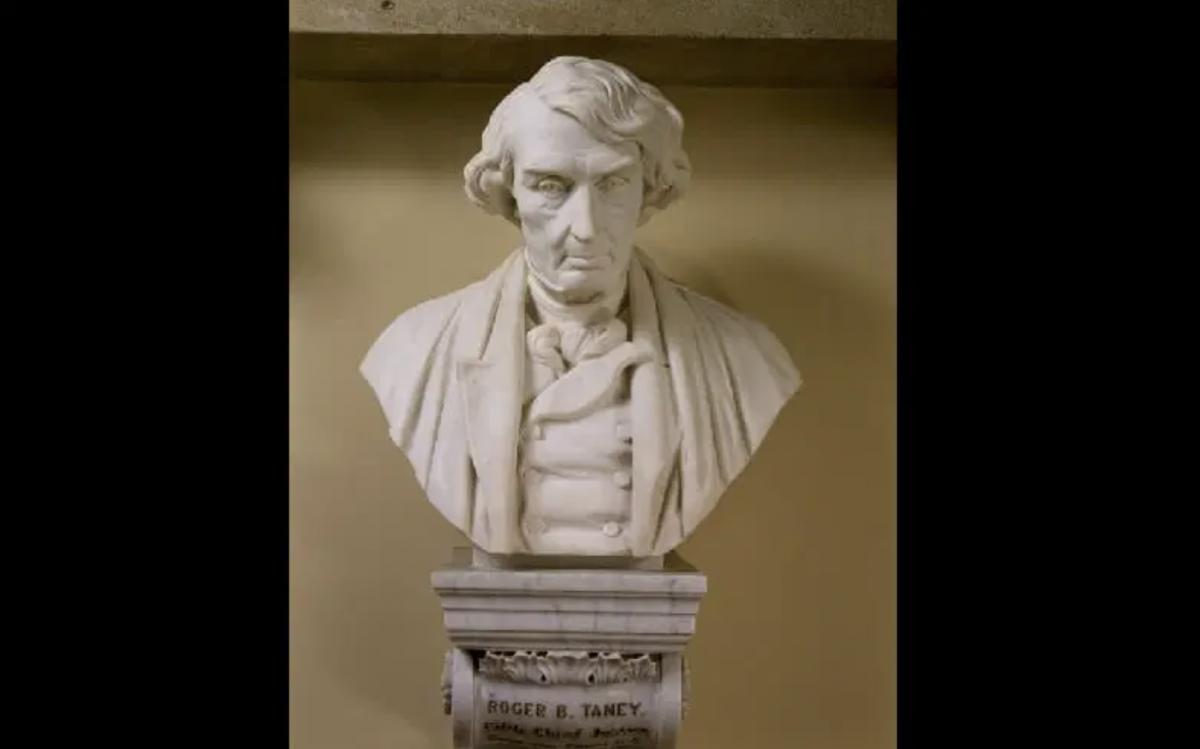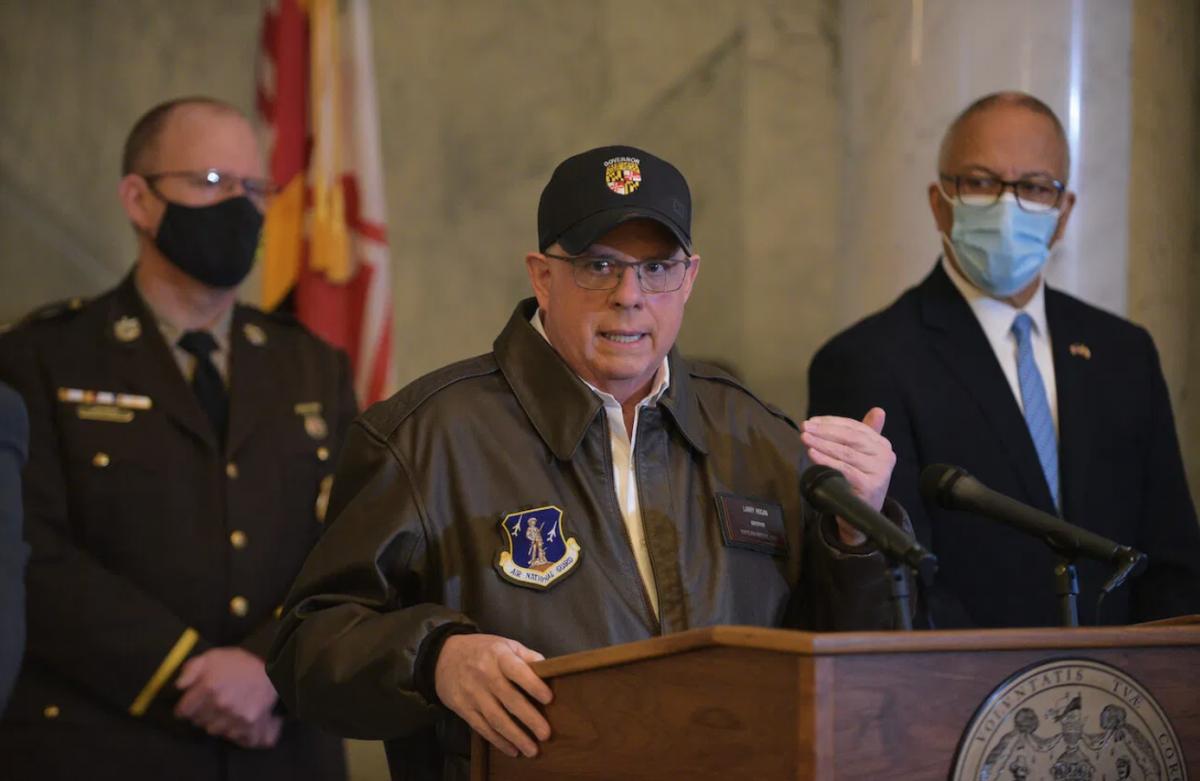A D.C. firm with at least one statue removal among its recent projects was the sole bidder for the removal and relocation of the Confederate monument on the Talbot courthouse green.
The county council awarded the contract Nov. 23 to Stratified Inc., which offered a $67,000 bid to remove the controversial monument and relocate it to a Civil War battlefield site in Virginia. However, a majority of the council also provided additional time for another location — preferably in Talbot County or elsewhere in Maryland — to be offered.
If a closer, suitable site is offered — the council had asked for any last-minute proposals to be submitted by Monday, Dec. 6 — the county could then negotiate with Stratified Inc. to amend the contract to reflect the new location. Any proposals that were submitted by Monday will be reviewed by county staff and presented for consideration at the council’s regular meeting on Tuesday, Dec. 14.
“We have some possibilities within the county to relocate the monument,” Councilwoman Laura Price said. “Nobody’s trying to keep it here (on the courthouse green) anymore. But there are people who would like it to stay in the county. And that needs to be given an opportunity.
“So all we’re talking about here is to allow the county manager some flexibility that if a location within the county or even possibly, if it’s not in the county within the state, rather than moving it to Virginia, comes available during the process — because the RFP will take some time a little bit of time — to allow the county manager some flexibility that if a location is appropriate, and council chooses to do that, it just gives some flexibility.
“It does not stop this RFP process. It just allows it to be moved elsewhere in the county rather than to Virginia if that opportunity presents itself in the next month or so,” Price said.
Other council members noted supporters of keeping the monument on the courthouse green or in Talbot County have had ample opportunity to find and propose a suitable location elsewhere in Talbot County.
Councilman Frank Divilio said two proposals came in after the deadline for the RFP and he was disappointed in those offers. (During the Nov. 23 meeting, Price said she was getting text messages that there was another proposal that had not yet been provided to the county council.)
“I feel that it was a bit disingenuous when individuals say that there are locations and people that would take it without giving thought to their neighbors, their homeowners associations,” Divilio said. “I don’t see how extending the deadline will make anyone who has reservations of coming forward as have been expressed, come forward any faster.
“We gave that opportunity. We were approached and told that many individuals who are willing to accept it are afraid to come forward. And to me that doesn’t show the full commitment to the community that they would be willing to do it,” he said.
Council Vice President Pete Lesher expressed similar concerns about a location other than Cross Keys and outlined his criteria for a suitable monument site:
“(T)here are two attributes that I think the Cross Keys location has that that another location would have to provide. One is that it is owned and operated by an organization that is organized for that purpose in perpetuity. In other words, … the land will not be bought and sold…. It is owned by a preservation organization. And there is … no foreseeable prospect that that will change in in any foreseeable timeline. So there’s an element of perpetuity here.
“You know, if this was a private landowner, the land could be sold and then what. So I don’t see, I don’t see a private landowner being a responsive prospect for this destination.
“Second, is that there is an authenticity to this location. A lot of Talbot County boys fought in this location, people who are named on this monument, there’s something that is true about that location. That authenticity of location I think is something that happens (to be) a particular advantage. Now, perhaps there are other places that would meet (that authenticity).
“(A)nd most important is that this location also ensures public access for the indefinite future.”
“If there are other locations, perhaps that are closer, that could fulfill all of those requirements,” Lesher said he would be willing to support such a location. “(B)ut there … are a lot of advantages to the (Cross Keys) location and that is why I’m reticent to support this. I’m willing to explore alternatives. But right now, I’m skeptical that there’s one that will exceed the advantages of the (location) that is on the table.”
The council voted 3-2 to amend the awarding of the bid to include the possibility of another location; then voted 5-0 to award the bid as amended.
That ultimate vote prompted Lesher and Councilman Corey Pack to note that the council had voted unanimously to move the monument.
“This council just voted unanimously to award a bid to move the monument,” Lesher said. “That’s something that I did not expect and I think it is pretty extraordinary.”
Pack said he had not picked up on that point during the confusion over the votes.
“… (T)he statute will be moved. And for the first time — as Mr. Lesher pointed out — a unanimous vote to move the statue. That should be the front page story: That this council had voted unanimously to move the Confederate statue.”
Council President Chuck Callahan seemed to take some umbrage to that point.
“Laura and I voted against moving that statute. So that’s, that’s number one. I want to make sure we understand that.
“Number two, is we tried to create a situation to keep it here. Okay. So that’s the reason we voted the way we did,” Callahan said. “Okay, so you can think what you want.
“But, you know, hey, it’s over, it’s done with. The people that maybe have a place for it they have another couple of weeks to go ahead and, you know, see what that’s all about,” he said. “And all we tried to do is create a situation to try to please everybody and keep it here. That’s all we’re trying to do.”
Lesher, Pack, and Divilio had voted Sept. 14 to relocate the monument to the Cross Keys Battlefield near Harrisonburg, Va., which is part of the Shenandoah Valley Battlefields Foundation.
Callahan, Price, and Lesher voted Nov. 23 to allow for additional time for proposals for an alternate location.
The costs associated with the monument’s removal and relocation will be paid by a private fund held at the Mid-Shore Community Foundation and there will be no cost to county taxpayers.
The Shenandoah Valley Battlefields Foundation works with partners to preserve the Shenandoah Valley’s Civil War battlefields, to share its Civil War story with the nation and to encourage tourism and travel to the Shenandoah Valley’s Civil War sites.
Sealed bids in response to the RFP were due 10 a.m. Nov. 19 and considered by the council at its Nov. 23 meeting.
Stratified’s proposal calls for the firm to begin the planning process for the statue removal and relocation once the bid is awarded, with removal to begin on Jan. 17 and to be completed by Jan. 21.
As a result of the pending relocation of the monument, a federal lawsuit calling for the statue’s removal has been placed on hold. The case currently is stayed until at least Jan. 21, with attorneys telling a U.S. District Court judge that a new status report will be submitted if “any new developments affect the timing of the proposed work prior to January 21.”
